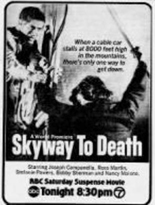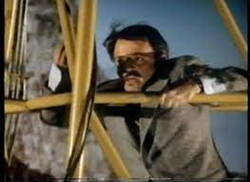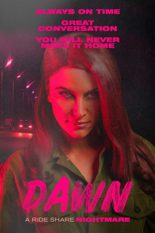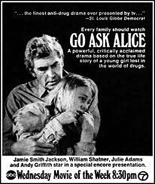
 Good help is hard to find. That’s true today as it was in, oh, for the sake of argument, let’s say ′74. Palo Alto tramway management finds out the hard way when a disgruntled former employee — fired for being drunk on the job — sabotages the mechanical system, leaving a cable car hovering at 8,700 feet as treacherous winds approach. Lesson learned: Terminated workers should be escorted off the property.
Good help is hard to find. That’s true today as it was in, oh, for the sake of argument, let’s say ′74. Palo Alto tramway management finds out the hard way when a disgruntled former employee — fired for being drunk on the job — sabotages the mechanical system, leaving a cable car hovering at 8,700 feet as treacherous winds approach. Lesson learned: Terminated workers should be escorted off the property.
Inside the cable car, the guide (bubble gum popster Bobby Sherman) does his best to reassure his seven passengers. Among them are agoraphobe John Astin (Wacky Taxi), pickpocket Severn Dardin (Saturday the 14th), philanderer Ross Martin (TV’s The Wild Wild West) and old bat Ruth McDevitt (The Birds), whose only concern is her goddamn $8 flower hat.
 From director Gordon Hessler (Pray for Death), Skyway to Death was the earlier of two stranded-cable-car movies made for TV in the disaster-film heyday. At 67 minutes, it’s also the shortest; oddly, that does not work in its favor, feeling like a crawl compared to 1979’s three-hour-plus Hanging by a Thread. How the latter’s producer, Irwin Allen, got away with not citing Skyway as source material is a mystery, because Thread copies this one beat for beat, from the jinxed chopper rescue attempt to the them’s-the-brakes conclusion. —Rod Lott
From director Gordon Hessler (Pray for Death), Skyway to Death was the earlier of two stranded-cable-car movies made for TV in the disaster-film heyday. At 67 minutes, it’s also the shortest; oddly, that does not work in its favor, feeling like a crawl compared to 1979’s three-hour-plus Hanging by a Thread. How the latter’s producer, Irwin Allen, got away with not citing Skyway as source material is a mystery, because Thread copies this one beat for beat, from the jinxed chopper rescue attempt to the them’s-the-brakes conclusion. —Rod Lott

 Having sent two young women to the sea floor in
Having sent two young women to the sea floor in 



 As the near-robotic, deplorable driver-for-hire Dawn of
As the near-robotic, deplorable driver-for-hire Dawn of 


